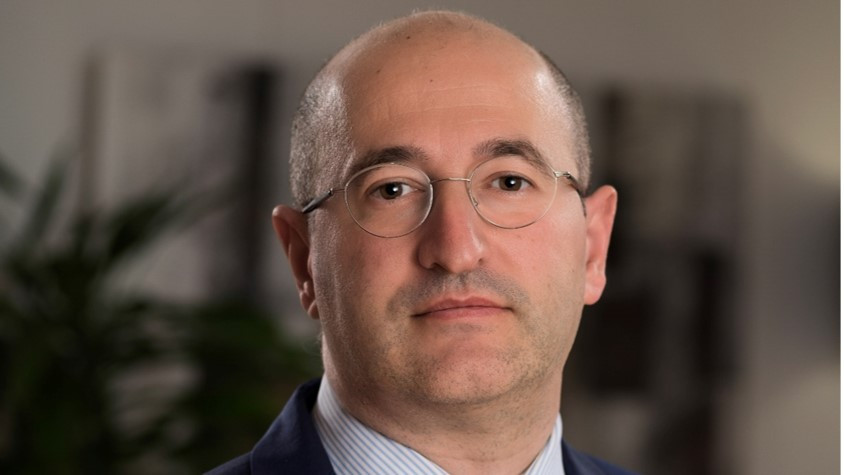Stéphane Soussan has been a natural resources portfolio manager at Amundi since 2008. He has been the manager of the agriculture theme since 2013, and co-manager of the natural resources theme at CPR AM, a subsidiary of Amundi, since 2014. In this capacity, he is one of the managers of CPR AM’s Food For Generations fund.
This thematic investment fund, which aims to be an impact fund, supports companies across the food chain in their sustainability challenges, keeping an eye on the many growth opportunities within this value chain. In an interview, he talks about the agricultural value chain and its challenges.
Marc Fassone: Thematic investments focus on key trends that will shape the social and economic landscape in the coming years. What are these trends in the agricultural sector?
Stéphane Soussan: The challenge is to feed the world’s population over the coming decades in a sustainable way. That is to say, by preserving certain key resources, such as water and arable land, while controlling greenhouse gas emissions. This is really the great challenge of the next few decades, since it is estimated that we will reach 9.7bn inhabitants by 2050.
The key, given that we have limited arable land, is to increase yields. It is estimated that over the next 15-20 years, 75% of the growth in agricultural production will come from improving yields on existing land. For us, one of the solutions lies in precision agriculture. For example, not using pesticides on an entire field if it is not necessary. There are also developments in seeds without necessarily using GMOs.
We are trying to offer a solution to these challenges by investing in the entire food value chain, from field to plate, with a sustainable approach.
What are the drivers of the agricultural theme in terms of investment?
There are three [drivers]. The first has to do with demographic developments. The world’s population is growing by 1% a year. This is not huge, but there is a clear and direct link between this growth and the consumption of food products and water. Most of this population growth will take place in emerging countries. [These are] countries where increases in living standards are expected, which suggest that consumers will be moving towards more premium products. This should ultimately support the companies operating in these markets.
The second driver is resource conservation. For the food value chain, we believe that this will generate investment opportunities in four areas: firstly, precision agriculture, because it will be necessary to evolve agricultural production methods to use fewer inputs while continuing to produce more; sustainable packaging with the phasing out of plastic; water treatment and recycling; and improving the supply chain. It is estimated that about a third of the world’s food production is wasted. This needs to be improved.
Finally, there are the new consumer trends towards health and wellbeing.
And let’s not forget the development of e-commerce, which is not specific to food, but which has become relevant with covid. I’m thinking of online shopping, online food distributors and even certain delivery services for dishes or ingredients with recipes.
You were talking about a sustainable approach to your investments. How does this manifest itself?
Our approach is based on two pillars.
The first is the exclusion of the worst performing companies. We have a team of ESG analysts who will rate the companies on the basis of ESG criteria. The worst ones will be excluded. And if highly rated companies behave badly on certain criteria relevant to the food value chain--such as water management, waste management, forestry, supply chain and nutritional value of products--they will also be excluded. As well as companies facing controversies such as product contamination that have a significant impact on a company’s reputation or accounts.
This filter excludes about 12% of the companies in our investment universe of about 450 stocks.
The second pillar is a more ‘positive’ approach: we measure the impact of our portfolio in terms of carbon intensity--a measure that has become a classic--water intensity and waste recycling rates. Our commitment is that our portfolio is less carbon and water intensive than our investment universe.
There is a lot of talk about the impact of the war in Ukraine on the energy markets. But what are the impacts on agricultural markets?
They are huge. First of all, Russia and Belarus are major fertiliser exporters. For some fertiliser families, the volumes are unprecedented. For example, these two countries under sanctions represent 40% of world potash exports. This has an impact on product prices.
Then look at the maize, wheat and vegetable oil markets. Ukraine, which cannot produce, accounts for 15% of world maize exports and 10% of world wheat exports. Russia, which cannot export, accounts for 19% of world wheat exports. Together, these two countries account for three-quarters of the sunflower oil market. With substitution effects, other commodities such as barley and rapeseed are under pressure.
By way of comparison, Russia accounts for 10% of world crude oil production and 4% to 5% of exports.
Can we imagine a food crisis?
The FAO--the World Food and Agriculture Organisation--is talking about supply problems, famine and shortages. Let’s remember that the Arab springs of the 2010s were caused in particular by the very high prices of cereals at the time.
It may seem cynical to mention this, but this crisis has had an extremely beneficial effect on the companies listed on the agriculture sector. Especially for agricultural machinery, fertilisers and seeds.
Originally published in French by and translated for Delano.
